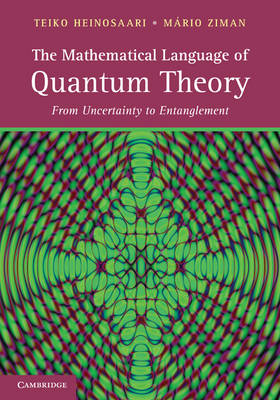: 2026
: 2025
: 2024
: 2023
: 2022
: 2021
: 2020
: 2019
: 2018
: 2017
: 2016
: 2015
: 2014
: 2013
: 2012
: 2011
: 2010
: 2009
: 2008
: 2007
:
 30.12.2010
30.12.2010
Simulation of classical thermal states on a quantum computer: A transfer-matrix approach by Man-Hong Yung, Daniel Nagaj, James D. Whitfield, and Alán Aspuru-Guzik We present a hybrid quantum-classical algorithm to simulate thermal states of classical Hamiltonians on a quantum computer. Our scheme employs a sequence of locally controlled rotations, building up the desired state by adding qubits one at a time. We identified a class of classical models for which our method is efficient and avoids potential exponential overheads encountered by Grover-like or quantum Metropolis schemes. Our algorithm also gives an exponential advantage for two-dimensional Ising models with magnetic field on a square lattice, compared with the previously known Zalka’s algorithm. Published in Physical Review A |+++| |
 13.12.2010
13.12.2010
Experimentally feasible security check for n-qubit quantum secret sharing by Stefan Schauer, Marcus Huber, and Beatrix C. Hiesmayr In this article we present a general security strategy for quantum secret sharing (QSS) protocols based on the scheme presented by Hillery, Bužek, and Berthiaume (HBB) [Phys. Rev. A 59, 1829 (1999)]. We focus on a generalization of the HBB protocol to n communication parties thus including n-partite Greenberger-Horne-Zeilinger states. We show that the multipartite version of the HBB scheme is insecure in certain settings and impractical when going to large n. To provide security for such QSS schemes in general we use the framework presented by some of the authors [M. Huber, F. Mintert, A. Gabriel, B. C. Hiesmayr, Phys. Rev. Lett. 104, 210501 (2010)] to detect certain genuine n-partite entanglement between the communication parties. In particular, we present a simple inequality which tests the security. Published in Physical Review A |+++| |
 4.11.2010
4.11.2010
Quantum State Restoration and Single-Copy Tomography for Ground States of Hamiltonians by Edward Farhi, David Gosset, Avinatan Hassidim, Andrew Lutomirski, Daniel Nagaj, and Peter Shor Given a single copy of an unknown quantum state, the no-cloning theorem limits the amount of information that can be extracted from it. Given a gapped Hamiltonian, in most situations it is impractical to compute properties of its ground state, even though in principle all the information about the ground state is encoded in the Hamiltonian. We show in this Letter that if you know the Hamiltonian of a system and have a single copy of its ground state, you can use a quantum computer to efficiently compute its local properties. Specifically, in this scenario, we give efficient algorithms that copy small subsystems of the state and estimate the full statistics of any local measurement. Published in Physical Review Letters |+++| |
 27.10.2010
27.10.2010
Defense of doctoral thesis Marián Roško successfully defended his doctoral thesis entitled Entanglement and instabilities in Dicke model. The defense was held on November 18th (10:00) in the seminar room of our research centre. | thesis | autoreferat | |
 6.10.2010
6.10.2010
Finding structural anomalies in graphs by means of quantum walks by Edgar Feldman, Mark Hillery, Hai-Woong Lee, Daniel Reitzner, Hongjun Zheng, and Vladimír Bužek We explore the possibility of using quantum walks on graphs to find structural anomalies, such as extra edges or loops, on a graph. We focus our attention on star graphs, whose edges are like spokes coming out of a central hub. If there are N spokes, we show that a quantum walk can find an extra edge connecting two of the spokes or a spoke with a loop on it in O(√N) steps. We initially find that if all except one of the spokes have loops, the walk will not find the spoke without a loop, but this can be fixed if we choose the phase with which the particle is reflected from the vertex without the loop. Consequently, quantum walks can, under some circumstances, be used to find structural anomalies in graphs. Published in Physical Review A |+++| |
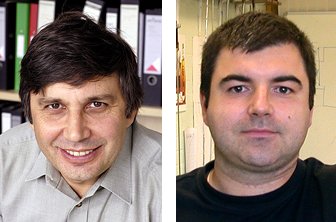 5.10.2010
5.10.2010
Physics Nobel Prize 2010 was awarded to Andrej Geim and Konstantin Novoselov from University of Manchester for their isolation of graphene - a two-dimensional material of many interesting properties. |
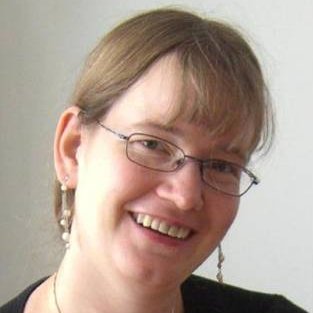 23.9.2010
23.9.2010
Dr. Beatrix Hiesmayr has joined our group. Welcome. |
 1.10.2010
1.10.2010
Recycling of qubits by P.Rapčan, J.Calsamiglia, R.Muñoz-Tapia, E.Bagan and V.Bužek We consider a finite number, N, of qubits that encode a pure single qubit state SU(2) covariantly. Given the N-qubit state has already been measured optimally to estimate the single-qubit state, we analyse the maximum information obtainable by a second, and subsequent observers ignorant of important details of the previous measurements. We quantify the information acquired by each observer as a function of N and of the number of independent observers that in succession have independently measured the same ensemble of qubits before him. Published in Physica Scripta |+++| |
 28.9.2010
28.9.2010
Approximating incompatible von Neumann measurements simultaneously by Teiko Heinosaari, Maria Anastasia Jivulescu, Daniel Reitzner, and Mario Ziman We study the problem of performing orthogonal qubit measurements simultaneously. Since these measurements are incompatible, one has to accept additional imprecision. An optimal joint measurement is the one with the least possible imprecision. All earlier considerations of this problem have concerned only joint measurability of observables, while in this work we also take into account conditional state transformations (i.e., instruments). We characterize the optimal joint instrument for two orthogonal von Neumann instruments as being the Lüders instrument of the optimal joint observable. Published in Physical Review A |+++| |
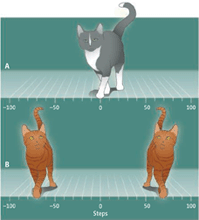 17.9.2010
17.9.2010
Quantum Walks Through a Waveguide Maze Mark Hillery's "Perspectives" article printed in Science. Read the whole te |here| |
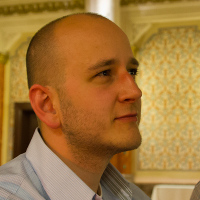 23.8.2009
23.8.2009
PhD defense of Daniel Reitzner 23.8.2009 Daniel Reitzner successfully defended his dissertation entitled Utilisation of Scattering Quantum Walks in Searches on Highly Symmetric Graphs. Congratulations! |
 21.7.2010
21.7.2010
Spin-orbit coupling and anisotropic exchange in two-electron double quantum dots by Fabio Baruffa, Peter Stano and Jaroslav Fabian The influence of the spin-orbit interactions on the energy spectrum of two-electron laterally coupled quantum dots is investigated. The effective Hamiltonian for a spin qubit pair proposed in Baruffa et al. [Phys. Rev. Lett. 104, 126401 (2010)] is confronted with exact numerical results in single and double quantum dots in zero and finite magnetic field. The anisotropic exchange Hamiltonian is found quantitatively reliable in double dots in general. There are two findings of particular practical importance: (i) the model stays valid even for maximal possible interdot coupling (a single dot), due to the absence of a coupling to the nearest excited level, a fact following from the dot symmetry. (ii) In a weak-coupling regime, the Heitler-London approximation gives quantitatively correct anisotropic exchange parameters even in a finite magnetic field, although this method is known to fail for the isotropic exchange. The small discrepancy between the analytical model (which employs the linear Dresselhaus and Bychkov-Rashba spin-orbit terms) and the numerical data for GaAs quantum dots is found to be mostly due to the cubic Dresselhaus term. Published in Physical Review B |+++| |
 19.7.2010
19.7.2010
Unfrustrated qudit chains and their ground states by Ramis Movassagh, Edward Farhi, Jeffrey Goldstone, Daniel Nagaj, Tobias J. Osborne, and Peter W. Shor We investigate chains of d-dimensional quantum spins (qudits) on a line with generic nearest-neighbor interactions without translational invariance. We find the conditions under which these systems are not frustrated, that is, when the ground states are also the common ground states of all the local terms in the Hamiltonians. The states of a quantum spin chain are naturally represented in the matrix product states (MPS) framework. Using imaginary time evolution in the MPS ansatz, we numerically investigate the range of parameters in which we expect the ground states to be highly entangled and find them hard to approximate using our MPS method. Published in Physical Review A |+++| |
 1.5.2010
1.5.2010
Efficient Circuits for Quantum Walks by Chen-Fu Chiang, Daniel Nagaj, Pawel Wocjan We present an efficient general method for realizing a quantum walk operator corresponding to an arbitrary sparse classical random walk. Our approach is based on Grover and Rudolph's method for preparing coherent versions of efficiently integrable probability distributions. This method is intended for use in quantum walk algorithms with polynomial speedups, whose complexity is usually measured in terms of how many times we have to apply a step of a quantum walk, compared to the number of necessary classical Markov chain steps. We consider a finer notion of complexity including the number of elementary gates it takes to implement each step of the quantum walk with some desired accuracy. The difference in complexity for various implementation approaches is that our method scales linearly in the sparsity parameter and poly-logarithmically with the inverse of the desired precision. The best previously known general methods either scale quadratically in the sparsity parameter, or polynomially in the inverse precision. Our approach is especially relevant for implementing quantum walks corresponding to classical random walks like those used in the classical algorithms for approximating permanents and sampling from binary contingency tables. In those algorithms, the sparsity parameter grows with the problem size, while maintaining high precision is required. Published in Quantum Information and Computation |+++| |
 23.3.2010
23.3.2010
Theory of Anisotropic Exchange in Laterally Coupled Quantum Dots by Fabio Baruffa, Peter Stano and Jaroslav Fabian The effects of spin-orbit coupling on the two-electron spectra in lateral coupled quantum dots are investigated analytically and numerically. It is demonstrated that in the absence of magnetic field, the exchange interaction is practically unaffected by spin-orbit coupling, for any interdot coupling, boosting prospects for spin-based quantum computing. The anisotropic exchange appears at finite magnetic fields. A numerically accurate effective spin Hamiltonian for modeling spin-orbit-induced two-electron spin dynamics in the presence of magnetic field is proposed. Published in Physical Review Letters |+++| |
 18.3.2010
18.3.2010
Efficient compression of quantum information by Martin Plesch and Vladimír Bužek We propose a scheme for an exact efficient transformation of a tensor product state of many identically prepared qubits into a state of a logarithmically small number of qubits. Using a quadratic number of elementary quantum gates we transform N identically prepared qubits into a state, which is nontrivial only on the first log(N+1) qubits. This procedure might be useful for quantum memories, as only a small portion of the original qubits has to be stored. Another possible application is in communicating a direction encoded in a set of quantum states, as the compressed state provides a high-effective method for such an encoding. Published in Physical Review A |+++| |
 1.3.2010
1.3.2010
Single-shot discrimination of quantum unitary processes by Mário Ziman and Michal Sedlák We formulate minimum-error and unambiguous discrimination problems for quantum processes in the language of process positive operator valued measures (PPOVM). In this framework we present the known solution for minimum-error discrimination of unitary channels. We derive a 'fidelity-like' lower bound on the failure probability of the unambiguous discrimination of arbitrary quantum processes. This bound is saturated (in a certain range of a priori probabilities) in the case of unambiguous discrimination of unitary channels. Surprisingly, the optimal solution for both tasks is based on the optimization of the same quantity called completely bounded process fidelity. Published in Journal of Modern Optics |+++| |
 1.2.2010
1.2.2010
CEQIP 2010 7th Central European Quantum Information Processing Workshop will take place in Valtice from 3.-6.6.2010. All interested participants are encouraged to apply and join the informal athmosphere of this workshop. More information available at http://www.quniverse.org/ceqip/ |
 15.1.2010
15.1.2010
Equivalent programmable quantum processors by Mark Hillery, Vladimír Bužek, Mário Ziman Programmable quantum circuits, or processors, have the advantage over single-purpose quantum circuits that they can be used to perform more than one function. The inputs of a quantum processor consist of two quantum states, the first, the data register, is a state on which an operation is to be performed, and the second, the program, determines the operation to be performed on the data. In this paper we study how to determine whether two different quantum processors perform the same set of operations on the data. We define an equivalence between quantum processors that is quite natural in a circuit model of quantum information processing. Two processors are equivalent if one can be converted into the other by inserting fixed unitary gates at the input and the output of the program register. We then use this definition to find a necessary condition for two processors to be equivalent. We also study the beam splitter as an example of a quantum processor and find that this example suggests that as well as there being an equivalence relation on processors, there may also be a partial ordering. Published in Optics Communication |+++| |
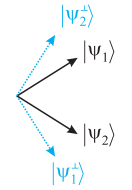 11.1.2010
11.1.2010
Quantum theory of unambiguous measurements by Michal Sedlák In the present paper I formulate a framework that accommodates many unambiguous discrimination problems. I show that the prior information about any type of constituent (state, channel, or observable) allows us to reformulate the discrimination among finite number of alternatives as the discrimination among finite number of average constituents. Using this framework I solve several unambiguous tasks. I present a solution to optimal unambiguous comparison of two ensembles of unknown quantum states ... Published in Acta Physica Slovaca |+++| |
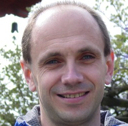 1.1.2010
1.1.2010Dr. Andrej Gendiar joined our group. |
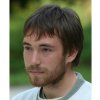 1.1.2010
1.1.2010Dr. Michal Sedlák has (temporarily) left the group. As postdoc he joined group of Prof. D'Ariano in Pavia, Italy. |
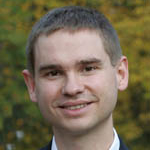 1.1.2010
1.1.2010Dr. Martin Plesch has left the group and joined Department of Complex Physical Systems at the Institute of Physics, Bratislava. |


